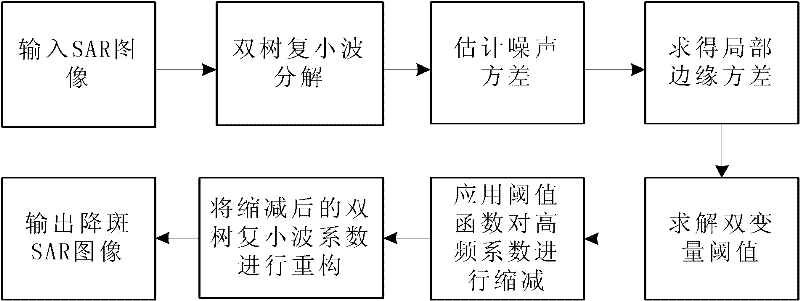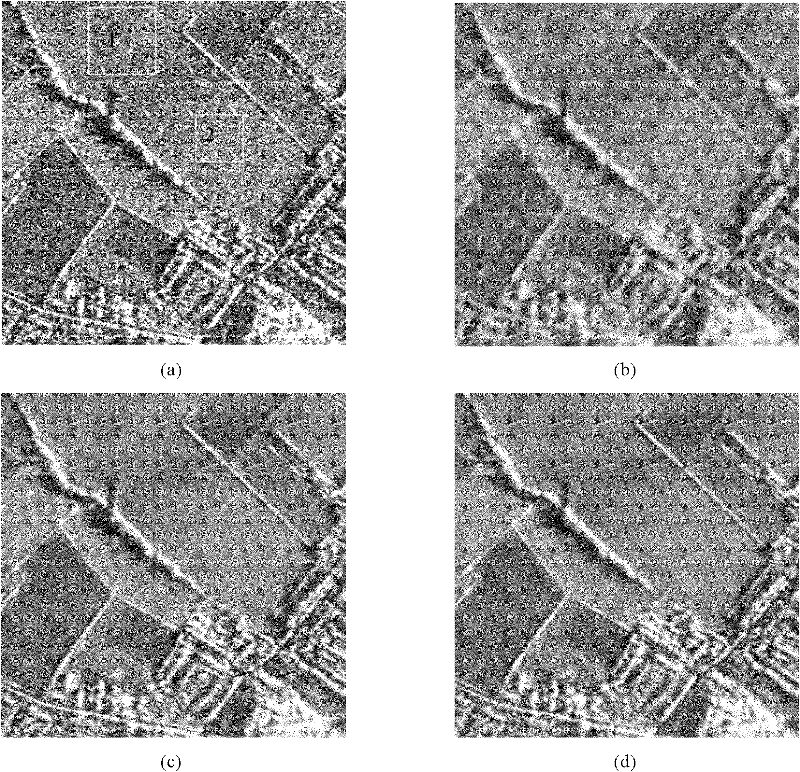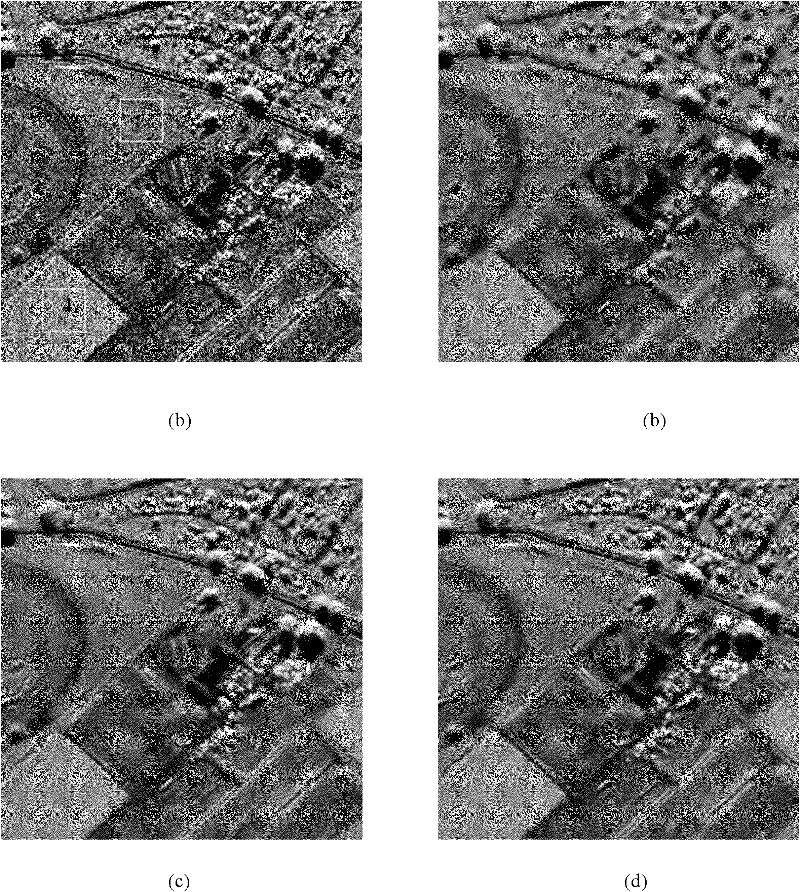Method for reducing speckles of synthetic aperture radar (SAR) image by combining dual-tree complex wavelet transform with bivariate model
A dual-tree complex wavelet and bivariate model technology, applied in the field of image processing, can solve the problems of loss of image details and edge information, insufficient speckle noise filtering, etc. Effect
- Summary
- Abstract
- Description
- Claims
- Application Information
AI Technical Summary
Problems solved by technology
Method used
Image
Examples
Embodiment Construction
[0019] refer to figure 1 , the specific implementation steps of the present invention are as follows:
[0020] Step 1, perform dual-tree complex wavelet decomposition on the input SAR original image.
[0021] The input original SAR image is denoted as I. The SAR image itself is an image polluted by speckle noise. Therefore, it is not necessary to add a random noise or noise of a certain characteristic to the original image as in the study of natural image denoising. The image is subjected to spot reduction processing, and the input original SAR image I is subjected to dual-tree complex wavelet decomposition to obtain one and one low-frequency image and J scales, each scale has 6 high-frequency images, and the complex of high-frequency images on scale j is The wavelet coefficient is denoted as y j
[0022] the y j =y r,j +i·y i,j (1)
[0023] where y r,j is the real part of the complex wavelet coefficient, y i,j is the imaginary part of the complex wav...
PUM
 Login to View More
Login to View More Abstract
Description
Claims
Application Information
 Login to View More
Login to View More - R&D
- Intellectual Property
- Life Sciences
- Materials
- Tech Scout
- Unparalleled Data Quality
- Higher Quality Content
- 60% Fewer Hallucinations
Browse by: Latest US Patents, China's latest patents, Technical Efficacy Thesaurus, Application Domain, Technology Topic, Popular Technical Reports.
© 2025 PatSnap. All rights reserved.Legal|Privacy policy|Modern Slavery Act Transparency Statement|Sitemap|About US| Contact US: help@patsnap.com



